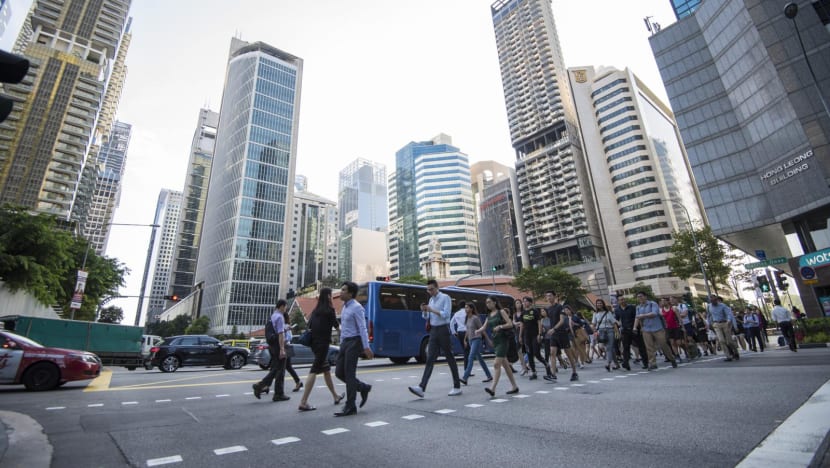Singapore’s 14th General Election: More Women Candidates on Voter Dynamics
The 14th General Election, with PM Lawrence Wong at the helm of the ministerial cabinet, is set to be a landmark event. The significance of increased female participation lies in its potential to diversify Parliament, which historically has seen periods of low representation.
In 2020, 28 women were elected, accounting for 29% of seats, up from none between 1970 and 1984. This trend suggests voters are becoming more accepting.
Hence, with Prime Minister Wong’s expressed hope to field more women candidates, as noted in a September 1, 2024, statement (The Star), the 2025 election could further amplify this shift.
We examine how this might influence voter preferences, turnout, and policy focus, providing practical guidance for readers to engage with this evolving dynamic.
Historical Context of Women in Singaporean Politics: From Absence to Presence
| Year | Event |
|---|---|
| 1948 | Women gain voting rights in Singapore. |
| 1959 | Four women from the People’s Action Party (PAP), including Chan Choy Siong and Ho Puay Choo, are elected. |
| 1970-1984 | No women hold parliamentary seats, attributed to societal norms and limited opportunities. |
| 1984 | Resurgence in female representation with three successful PAP candidates: Dixie Tan, Aline Wong, and Yu-Foo Yee Shoon. |
| 1988 | Seet Ai Mee becomes the first female minister. |
| 2009 | Lim Hwee Hua is appointed as the first female cabinet minister. |
| 2020 | A record 28 women are elected, achieving 29% representation in parliament. |
Key milestones include:
- 1959: First female MPs elected, including Chan Choy Siong
- 1984: Resurgence with three PAP women entering Parliament
- 1992: Kanwaljit Soin became the first female Nominated Member of Parliament (NMP)
- 2013: Halimah Yacob became the first female Speaker, later President in 2017 via an uncontested election
This evolution underscores a gradual acceptance, with historical data showing women’s share of seats increasing from 0% in the 1970s to 29% in 2020, as per Statista.

Recent Initiatives to Encourage Female Political Participation: Building an Inclusive Future
Both government and parties have taken steps to boost female participation.
| Aspect | Details |
|---|---|
| PAP Women's Wing | Formed in 1989, the PAP has been proactive in promoting engagement. In 2020, 25 women were fielded out of 93 candidates. |
| PM Wong's Statement | On September 1, 2024, PM Wong highlighted plans for more women candidates, emphasizing the importance of diversity for better decision-making. |
| Government Initiatives | Initiatives like the Ministry of Finance’s Women’s Budget Symposium and the Ministry of Manpower’s gender equality efforts support work-life balance, aiding women’s political careers. |
These efforts, coupled with public statements from leaders, aim to normalise women’s political roles, potentially influencing voter perceptions positively.
Challenges Faced by Women Candidates: Navigating Stereotypes and Responsibilities
Women candidates in Singapore face significant challenges in achieving representation:
- Women candidates in Singapore face ongoing hurdles despite progress.
- Stereotypes persist that women are less suited for politics; a 2022 Ipsos survey found 33% of Singaporean men believe feminism does more harm than good.
- Balancing public service with personal duties, such as childcare, is challenging; MP Sun Xueling emphasizes the need for support systems.
- Gender-based discrimination during campaigns is rare but can deter participation.
- Female MPs, like Halimah Yacob, highlight resilience and mentorship as key strategies.
- Political parties are increasingly offering support to help women navigate these challenges.
Impact on Voter Dynamics: Shifting Preferences and Engagement
The rise in women candidates is likely to reshape voter dynamics.
Research suggests a “gender affinity effect,” where voters may prefer candidates of their own gender, — potentially increasing women’s turnout, — especially if candidates address issues like healthcare and education.

Source : Statista 2020
Notes:
In 2020, women candidates had a 70% success rate (28 out of 40 elected) compared to men’s 42.76% (65 out of 152), though this may reflect PAP’s dominance (2020 Singaporean general election).
PAP women candidates had a 96% success rate (24 out of 25), while opposition women had 20% (3 out of 15), suggesting party affiliation often trumps gender.
However, the presence of women may normalise their roles, potentially shifting policy focus towards social welfare, appealing to voters valuing diversity.
Another 2020 survey showed 73% of male and 62% of female respondents believed equal opportunities exist, indicating growing acceptance (Statista), which could influence voting behaviour.
Increased engagement, especially among younger voters, might result from women candidates addressing relevant issues, though party loyalty remains a strong factor.
Comparative Analysis with Other Countries: Lessons for Singapore
| Country | Women in Parliament |
|---|---|
| Sweden | Over 40% |
| Japan | Lower representation |
| Singapore | 30 out of 103 (2023) |
Notes:
Comparing Singapore with nations like Sweden (over 40% women in Parliament) and Japan (lower representation) offers insights.
Sweden’s gender quotas and supportive policies, like parental leave, have normalised women’s political roles, potentially influencing voter behaviour to be gender-neutral (Asian Development Blog).
Japan faces cultural barriers, but increasing women candidates show change. Singapore, without quotas, relies on party initiatives, with 30 women MPs in 2023 out of 103, close to the 30% benchmark (Statista).
Lessons include adopting flexible work policies and public awareness campaigns to shift attitudes, with global data suggesting gender diversity correlates with higher voter engagement.
Future Outlook: Towards Gender Parity
- The 2025 election offers prospects for achieving gender parity, with ongoing recruitment and mentorship by parties like PAP.
- Policies supporting work-life balance, such as enhanced childcare, could ease women’s political participation.
- In the long term, a gender-diverse Parliament may lead to inclusive policies, enhancing societal cohesion.
- Public awareness through media and education can challenge stereotypes, fostering a political culture where women’s contributions are valued, benefiting governance and society.
Reflecting on Evolving Dynamics
The increased female candidacy in Singapore’s 14th General Election underscores a shift towards gender equality in politics. From historical lows to recent highs, with 28 women elected in 2020, voters are likely seeing a more representative Parliament.
This evolution, supported by party initiatives and societal changes, may influence preferences, turnout, and policy focus. This reflects Singapore’s journey towards an inclusive democracy where every voice, including women’s, shapes the nation’s future.
Key Citations
- The Star Singapore's PM Wong hopes to field more women candidates
- PAP Women’s Wing members of Parliament page
- Ipsos Singaporeans' attitudes towards gender equality, feminism and online behaviour
- Statista Singapore voter opinion on gender opportunities GE 2020
- 2020 Singaporean general election Wikipedia page
- Asian Development Blog Getting More Women into Asia’s Parliaments is Key to Gender Equality
- Statista Singapore proportion of seats held by women in national parliament 2023
Let us know what you think about this topic, and what do you want to hear next.
You can now be our community contributor and make a pitch to have your favourite personality be on our show.
Join our community group and drop us your insights on this topic.

-3.png?width=50&name=Square%20(2)-3.png)









Let us know what you think of this post